 September 30, 2021 John E. Ross, KD8IDJ, Editor
| ||||||
Deaf Pupils Set to Speak with ISS Crew Member in a World-First Event Amateur Radio on the International Space Station (ARISS) will offer a group of pupils at the Mary Hare School for deaf children in Berkshire, England an opportunity to speak with an astronaut via amateur radio. The "It is a very exciting event -- a world first for deaf pupils," said Alex Ayling, a science teacher at the school. "I think it is very important to our deaf pupils, as it shows whatever your challenges with communication, there is no limit to what you can achieve. The sky is not the limit." Ciaran Morgan, M0XTD, ARISS operations lead for the UK, said that technical aspects of the radio contact are being handled by the ARISS-UK team. The Newbury and District Amateur Radio Society (NADARS) will provide "the amateur radio experience" for the students, through ham radio events and activities at the school. Lessons related to ARISS include a crystal radio, electricity and circuits, forces, energy, sound, electromagnetism, space and space exploration, the ISS, and rocketry. During September, the school has been conducting a competition, inviting students to enter questions from one of five categories -- science in space, space technology, living in space, space communication, and Earth from space. The school staff will pick the 10 At the school, an expected audience of 250 socially distanced spectators will be able to see the radio contact firsthand. The remaining students and audience members will be linked in via a web feed. Amateur radio equipment has been on board the ISS for more than 20 years, and most astronauts hold ham radio licenses. A live web feed will be available. Mary Hare School educates some 240 profoundly and severely deaf children, aged 5 - 19, each year. In the US, ARISS is sponsored by NASA, the ISS National Laboratory, ARRL, and AMSAT. -- Thanks to UK News Amateur Radio Volunteers Assist in Major US Cycling Event Some 115 amateur radio volunteers from five states turned out on September 11 to support communication for the longest single-day US-sanctioned cycling event, LoToJa, now in its 39th year. Starting in Logan, Utah, the 203-mile course ends in Jackson Hole, Wyoming -- taking cyclists through northeastern Utah, southeastern Idaho, and "This year's race will have 600 course volunteers, which includes 150 ham radio operators [and helpers] from the Bridgerland Amateur Radio Club. They provide uninterrupted communication throughout LoToJa's mountainous and remote terrain," Race Director Brent Chambers told the Cache Valley Daily. "We take two portable repeaters to the top of mountains, and we deploy multiple APRS digipeaters," explained Kevin Reeve, N7RXE, the coordinator of amateur radio operators and communication Ted McArthur, AC7II, heads the communication infrastructure team for the LoToJa hams. In all, nine repeaters and several simplex frequencies are used throughout the event, and APRS plays an important role. "With [an increased] number of mobile vehicles needed to meet a growing event, Net Control stations were spending a lot of radio time asking for position reports," McArthur said. "We needed the air time for real traffic, like helping cyclists, emergencies, and other critical traffic." "LoToJa is such a great event for amateur radio operators to participate in," said Tyler Griffiths, N7UWX. "It is the ARES [Amateur Radio Emergency Service®] radio operator's dream event. We know where it starts, we know where it ends, but everything that happens in between is different from year to year." ARRL Podcasts Schedule
The On the Air and Eclectic Tech podcasts are sponsored by Icom. Both podcasts are available on iTunes (iOS) and Stitcher (Android) as well as on Blubrry -- On the Air | Eclectic Tech. Past AMSAT President and Director, and Amateur Satellite Pioneer Tom Clark, K3IO, SK AMSAT-NA Past President and ham radio satellite and digital pioneer Tom Clark, K3IO (ex-W3IWI), of Columbia, Maryland, died on September 28 after a short illness and hospital stay. An ARRL Life "His longtime technical achievements, mentoring to others, and technical leadership will be missed by his many peers and friends the world over," said Bob McGwier, N4HY. To honor Clark, AMSAT has rebranded its upcoming annual gathering as The 2021 AMSAT Dr. Tom Clark, K3IO, Memorial Space Symposium and Annual General. It will take place on October 30 via Zoom. (AMSAT members may register to attend via AMSAT's Member Portal.) The event will be livestreamed on AMSAT's YouTube channel. A founding member of Tucson Amateur Packet Radio (TAPR), Clark was a cofounder of the TAPR/AMSAT DSP Project, which led to software-defined radio. He was a leader in the development of the AX.25 packet radio protocol. Clark served as AMSAT's second president, from 1980 until 1987. He also served on the AMSAT and TAPR Boards. In concert with McGwier, Clark developed the first amateur DSP hardware, including a number of modems. He developed the uplink receivers and the spacecraft LAN architecture used on all the Microsats (Oscars 16, 17, 18, 19, 26, 27, and 31). McGwier said it was Clark who convinced him in 1985 that the future lay in DSP. "We started the TAPR/AMSAT DSP project, and it was announced in 1987," McGwier recounted. "We showed in our efforts that small stations with small antennas could bounce signals off the moon, and using the power of DSP, we could see the signals in our computer displays." This led to the software-defined transponder (SDX) for satellite work, including ARISSat and AMSAT's Phase 3E. Clark received a doctorate in astro-geophysics from the University of Colorado. He went on to serve as Chief of the Astronomy Branch at In 2005, he became the first non-Russian to be awarded the Special Medal of the Russian Academy of Sciences for his contributions to the international VLBI network. He is a member of the 2001 class of CQ Magazine's Amateur Radio Hall of Fame. In 2016, ARRL awarded Clark with its President's Award, to recognize his 60 years of advancing amateur radio technology. On that occasion, McGwier said, "There would be no AMSAT to inspire all of this work without Tom Clark. Tom...saved the organization and inspired all of us to look to the future and aim for the stars," McGwier said. Clark was a Fellow of the American Geophysical Society and the International Association of Geodesy. Georgia Gets a New Section Manager; Re-Elected SMs Begin New Terms on October 1 Jim Millsap, K9APD, will become the ARRL Georgia Section Manager (SM) on Friday, October 1. Millsap, of Acworth, was the only candidate who applied by the June 4 nomination deadline. Millsap has been an ARRL Emergency Coordinator and District Emergency Coordinator. He These incumbent SMs faced no challengers in the summer election cycle and will also begin new 2-year terms of office on October 1: Robert Wareham, N0ESQ (Colorado); Diana Feinberg, AI6DF (Los Angeles), Carol Milazzo, KP4MD (Sacramento Valley); Bill Hillendahl, KH6GJV (San Francisco); Stuart Wolfe, KF5NIX (South Texas); Monte Simpson, W7FF (Western Washington), and Dan Ringer, K8WV (West Virginia). Eastern Washington Section Manager Jo Whitney, KA7LJQ, was also the only nominee when the June 4 nomination deadline arrived. Whitney, of Yakima, was initially scheduled to start her elected term of office on October 1. However, she was appointed to start her term of office on July 1 after outgoing SM Jack Tiley, AD7FO, stepped down before the completion of his term. ARRL Learning Network Webinars
ARRL members may register for upcoming presentations and view previously recorded Learning Network webinars. ARRL-affiliated radio clubs may also use the recordings as presentations for club meetings, mentoring new and current hams, and discussing amateur radio topics. Working the Pileup, presented by Ron Delpiere-Smith, KD9IPO / Tuesday, October 5, 2021 @ 1:00 pm EDT (1700 UTC) Ron Delpiere-Smith, KD9IPO, Vice President of the Chicago Suburban Radio Association and an ARRL Assistant Section Manager in Illinois, will offer an enlightening discussion on working a pileup from both sides of the contact. Whether your interest lies in ARRL Field Day, contesting, special events, or rare DX, this is a must-see presentation. Ron will discuss search-and-pounce and running techniques, when to use them, and some tips on working them to your advantage. The ARRL Learning Network schedule is subject to change. ARISS Seeks Hosts for Ham Radio Contacts with Space Station Crew Starting on October 1, Amateur Radio on the International Space Station (ARISS) will accept applications from US schools, museums, science centers, and community youth organizations (individually or working together) interested in hosting amateur radio contacts with crew members on the International Space Station (ISS). Contacts will be scheduled between July 1 and December 31, 2022. Crew The deadline to submit is November 24. Proposal information and more details, including expectations, proposal guidelines, and a proposal form are on the ARISS-US website. An ARISS introductory webinar session will be held on October 7 at 8 PM ET (2400 UTC). Sign up for the webinar via Eventbrite. Each year, ARISS provides tens of thousands of students with opportunities to learn about space technologies and communications through amateur radio. Crew members aboard the ISS will participate in scheduled amateur radio contacts. These contacts are approximately 10 minutes long and allow students to interact with the astronaut through a question-and-answer session. The program offers learning opportunities by connecting students to orbiting astronauts through a partnership that includes ARRL, AMSAT, and NASA, as well as other amateur radio organizations, and space "Educators overwhelmingly report that student participation in the ARISS program stimulates interest in STEM subjects and in STEM careers," ARISS said in their announcement regarding the contact opportunities. ARISS says enthusiasm sparked by a school contact may also lead to an interest in ham radio among students and to the creation of ham radio clubs in schools. Some educators have even become radio amateurs after experiencing a contact with an ISS crew member. ARISS is celebrating 20 years of continuous amateur radio operations on the ISS. Contact ARISS-US for additional information. Amateur Radio in the News ARRL Public Information Officers, Coordinators, and many other member-volunteers help keep amateur radio and ARRL in the news.
Share any amateur radio media hits you spot with us. Many Ham Radio Organizations Represented at 2021 ARRL New England Division Convention This year's Northeast HamXposition drew about 1,200 attendees to its new location in Marlborough, Massachusetts, during September 10 - HamXposition Chairman Bob DeMattia, K1IW, and his committee said they were pleased with the turnout, given last year's cancellation and this year's new venue. The event was held at the Best Western Royal Plaza Hotel and Trade Center in Marlborough. Although there were some last-minute cancellations from a handful of exhibitors and presenters, W1 QSL Bureau Co-Manager Eric Williams, KV1J, believed that there was "remarkably good attendance," despite the concerns of COVID-19. The W1 QSL Bureau team included ARRL Director of Operations Bob Naumann, W5OV, who checked DXCC and other ARRL award applications throughout the convention.
In addition to ARRL Vice President Mike Raisbeck, K1TWF, and New England Division Director Fred Hopengarten, K1VR, the 2021 ARRL convention team included New England Division Vice Director Phil Temples, K9HI; Field Services Manager Mike Walters, W8ZY; Senior Member Services Representative Kim McNeill, KM1IPA; Director of Operations Bob Naumann, W5OV, and Public Relations and Innovation Director Bob Inderbitzen, NQ1R. Several Section Managers and other Field Organization volunteers also supported the convention. Raisbeck and Temples also served as the convention's Vice Chair and Program Chair, respectively. The Nashua Area Radio Society (NARS) of New Hampshire demonstrated a variety of activities to encourage new licensees to become "radio active." NARS was among several radio clubs and organizations that staffed visitor booths at the event. Members of the Women Radio Operators of New England (WRONE) hosted an exhibit for the Young Ladies' Radio League (YLRL), represented by District 1 YL Barbara Irby, KC1KGS, and Anne Manna, WB1ARU. These organizations encourage and assist women entering the Amateur Radio Service. Sci-Tech Amateur Radio Society (STARS) of New England Sci-Tech in Natick, Massachusetts, offered a hands-on exhibit and conducted a youth panel. STARS is hosted by the STEM Education Center and Makerspace at New England Sci-Tech.
DXCC and Contest Dinner speaker Adrian Ciuperca, KO8SCA, recapped the DXpedition and IARU Contest activities and activations from Market Reef and Åland Islands. On Saturday, the banquet speaker was Philip J. Erickson, W1PJE, of Haystack Observatory, operated by Massachusetts Institute of Technology (MIT). Erickson discussed HamSCI's latest ionospheric science investigations, supported in partnership with radio amateurs and scientists from Haystack Observatory and other institutions. The ARRL leadership team hosted an ARRL Membership Forum on Saturday. ARRL Washington Counsel Dave Siddall, K3ZJ, was among the attendees. Inderbitzen's keynote address on Saturday morning included a tribute to the September 11 attacks and a color guard supported by the local Boy Scouts of America. He also attended the youth panel and met with many young hams, parents, and their advisors throughout the event, including Olin College of Engineering undergraduate Zachary Sherman, KC1NXK, who exhibited for Olin Collegiate Amateur Radio Club, KC1LHR. -- Thanks to Bob Inderbitzen, NQ1R, ARRL Public Relations and Innovation Director Announcements
In Brief...
The K7RA Solar Update Tad Cook, K7RA, Seattle, reports: Sunspot activity was up over the past week, with the average daily sunspot number rising from 28.7 to 59.4, and average daily solar flux up 11.4 points to 89.8. The noon 10.7-centimeter solar flux was 101.6 on Wednesday, September 29, the highest value since December 3, 2020, when it was 102.9.
Predicted solar flux is 100, 105, 110, and 105 on September 30 - October 3; 95, 90, and 85 on October 4 - 6; 74 on October 7 - 9; 78 on October 10 - 12; 80 on October 13; 84, on October 14 - 15; 86 on October 16 - 17; 88 on October 18 - 22; 86 on October 23 - 25; 84 on October 26; 80 on October 27 - 29; 78 on October 30 - 31; 76 on November 1, and 74 on November 2 - 5. Predicted planetary A index is 12, 24 and 10 on September 30 - October 2; 5 on October 3 - 9; 12 on October 10; 5 on October 11 - 17; 10, 12, 10, and 8 on October 18 - 21; 5 on October 22 - 23; 18, 15, and 12 on October 24 - 26; 5 on October 27 - 30; 8 on October 31; 12 on November 1, and 5 on November 2 - 5. Sunspot numbers for September 23 - 29 were 75, 75, 38, 67, 30, 57, and 74, with a mean of 59.4. The 10.7-centimeter flux was 89.7, 88.4, 88.4, 86.3, 85.3, 88.9, and 101.6, with a mean of 89.8. Estimated planetary A indices were 11, 8, 7, 3, 7, 10, and 5, with a mean of 7.3. Middle latitude A index was 10, 6, 7, 2, 6, 9, and 4, with a mean of 6.3. A comprehensive K7RA Solar Update is posted Fridays on the ARRL website. For more information concerning radio propagation, visit the ARRL Technical Information Service, read "What the Numbers Mean...," and check out the Propagation Page of Carl Luetzelschwab, K9LA. A propagation bulletin archive is available. For customizable propagation charts, visit the VOACAP Online for Ham Radio website. Share your reports and observations. Just Ahead in Radiosport
For more information, visit the ARRL Contest Calendar. Upcoming ARRL Section, State, and Division Conventions Some conventions and hamfests may have been canceled or postponed due to the coronavirus pandemic. Check the calendar of canceled events on the ARRL website.
Find conventions and hamfests in your area. ARRL -- Your One-Stop Resource for
Subscribe to...
Free of charge to ARRL members...
| ||||||
.jpg) contact is expected to take place sometime during October 10 - 17. Mary Hare School, with Pippa Middleton as its Ambassador, is the largest school for the deaf in the UK. The event will mark the first time an ARISS contact has been arranged with a school for deaf youth.
contact is expected to take place sometime during October 10 - 17. Mary Hare School, with Pippa Middleton as its Ambassador, is the largest school for the deaf in the UK. The event will mark the first time an ARISS contact has been arranged with a school for deaf youth.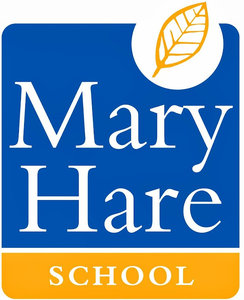 best questions, and those students will be invited to ask their questions. The astronaut's response will then be rendered as text for the students.
best questions, and those students will be invited to ask their questions. The astronaut's response will then be rendered as text for the students.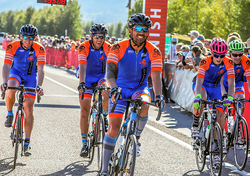 western Wyoming in the process. The race attracts thousands of applicants, and upward of 2,000 of them are selected to compete. Some 1,700 competed in this year's LoToJa. The event's cyclists and sponsors have contributed more than $2 million for Huntsman Cancer Foundation. Hams from multiple ARRL-affiliated clubs in Utah, including
western Wyoming in the process. The race attracts thousands of applicants, and upward of 2,000 of them are selected to compete. Some 1,700 competed in this year's LoToJa. The event's cyclists and sponsors have contributed more than $2 million for Huntsman Cancer Foundation. Hams from multiple ARRL-affiliated clubs in Utah, including .jpg) systems for LoToJa. "All ham vehicles run APRS, and we have APRS and a radio operator with the race director and race official. Our goal is to help the cyclists, support crews, and families have a safe and enjoyable event."
systems for LoToJa. "All ham vehicles run APRS, and we have APRS and a radio operator with the race director and race official. Our goal is to help the cyclists, support crews, and families have a safe and enjoyable event.".jpg) The latest episode of the On the Air podcast (Episode 21) features a discussion with Steve Goodgame, K5ATA, about the new edition of The ARRL Handbook and how it can be useful to new hams.
The latest episode of the On the Air podcast (Episode 21) features a discussion with Steve Goodgame, K5ATA, about the new edition of The ARRL Handbook and how it can be useful to new hams..jpg) The latest edition of Eclectic Tech (Episode 43) features a chat with Glen Popiel, KW5GP, about his new ARRL book More Arduino for Amateur Radio.
The latest edition of Eclectic Tech (Episode 43) features a chat with Glen Popiel, KW5GP, about his new ARRL book More Arduino for Amateur Radio.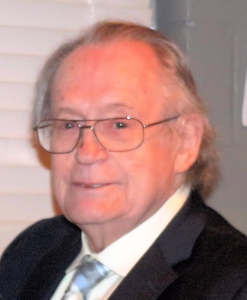 Member and ARRL Maxim Society and Diamond Club member, he was 82. Clark's accomplishments are legendary, and he left a lasting footprint on the worlds of amateur radio satellites and digital techniques.
Member and ARRL Maxim Society and Diamond Club member, he was 82. Clark's accomplishments are legendary, and he left a lasting footprint on the worlds of amateur radio satellites and digital techniques.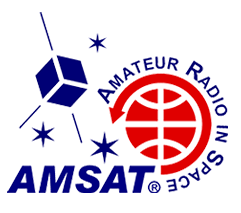 NASA Marshall Space Flight Center and was a Senior Scientist at NASA Goddard Space Flight Center, where he was principal investigator for the Very Long Baseline Interferometry (VLBI) activity.
NASA Marshall Space Flight Center and was a Senior Scientist at NASA Goddard Space Flight Center, where he was principal investigator for the Very Long Baseline Interferometry (VLBI) activity..jpg) also served as the ARRL Southeastern Division Vice Director from 2012 to 2014. Outgoing SM David Benoist, AG4ZR, of Senoia, decided not to run for a new term after serving since November 2016.
also served as the ARRL Southeastern Division Vice Director from 2012 to 2014. Outgoing SM David Benoist, AG4ZR, of Senoia, decided not to run for a new term after serving since November 2016.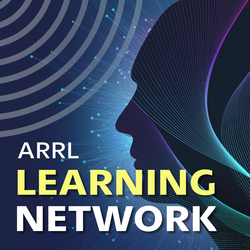 Visit the
Visit the 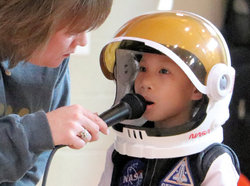 scheduling and ISS orbits will determine the exact contact dates. ARISS is looking for organizations that will draw a sizeable number of participants and integrate the contact into a well-developed education plan.
scheduling and ISS orbits will determine the exact contact dates. ARISS is looking for organizations that will draw a sizeable number of participants and integrate the contact into a well-developed education plan.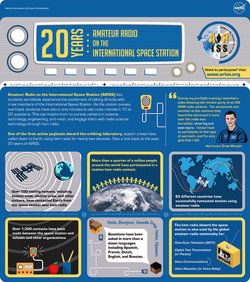 agencies in Russia, Canada, Japan, and Europe. The program's goal is to inspire students to pursue interests and careers in science, technology, engineering, and mathematics (STEM), as well as amateur radio.
agencies in Russia, Canada, Japan, and Europe. The program's goal is to inspire students to pursue interests and careers in science, technology, engineering, and mathematics (STEM), as well as amateur radio..jpg) 12. The event hosted the ARRL
12. The event hosted the ARRL 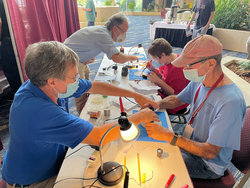
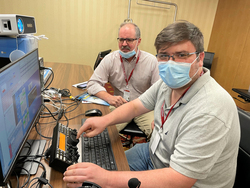
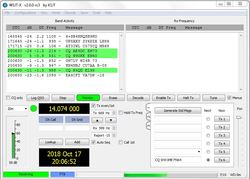 WSJT-X 2.5.0 is now in general release and is available on the
WSJT-X 2.5.0 is now in general release and is available on the 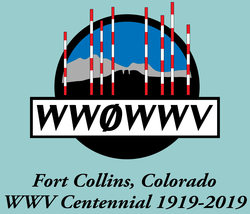
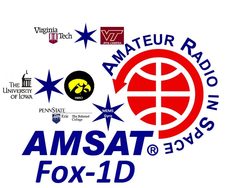 The AO-92 and FalconSAT-3 satellites have been shut down. AO-92 (Fox-1D) had started to change its behavior after a number of weeks of being powered on. In particular, the integrated housekeeping unit (IHU) switched to safe mode. This was likely due to low voltage during eclipse, which is when it should be drawing very little power if no one uses it. Mark Hammond, N8MH, also reported that he was turning off FalconSAT-3's transmitter, due to low voltage. -- Thanks to Burns Fisher, WB1FJ, AMSAT Engineering Team, via AMSAT News Service
The AO-92 and FalconSAT-3 satellites have been shut down. AO-92 (Fox-1D) had started to change its behavior after a number of weeks of being powered on. In particular, the integrated housekeeping unit (IHU) switched to safe mode. This was likely due to low voltage during eclipse, which is when it should be drawing very little power if no one uses it. Mark Hammond, N8MH, also reported that he was turning off FalconSAT-3's transmitter, due to low voltage. -- Thanks to Burns Fisher, WB1FJ, AMSAT Engineering Team, via AMSAT News Service(1).png) The IARU Region 1 Monitoring System finds Radio France International splatter "untenable." The International Amateur Radio Union Region 1 Monitoring System (IARUMS)
The IARU Region 1 Monitoring System finds Radio France International splatter "untenable." The International Amateur Radio Union Region 1 Monitoring System (IARUMS) 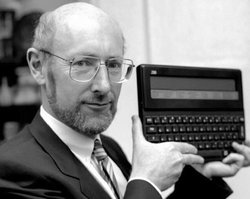 Pocket calculator inventor and home computing pioneer Sir Clive Sinclair died at his home on September 16 following a long illness. He was 81. Sinclair may have been best known for popularizing the home computer. Leaving school at 17, he worked for 4 years as a technical journalist to fund Sinclair Radionics and created the Sinclair Spectrum and the first computer, the Sinclair ZX-81. Many modern-day titans of the games industry got their start on one of his ZX models. Back in the day, the gamer's computer of choice was either the ZX Spectrum 48K or its rival, the Commodore 64. Among his other inventions was a coin-sized radio. Despite his computer background, Sinclair declined to use the internet, email, or even computers.
Pocket calculator inventor and home computing pioneer Sir Clive Sinclair died at his home on September 16 following a long illness. He was 81. Sinclair may have been best known for popularizing the home computer. Leaving school at 17, he worked for 4 years as a technical journalist to fund Sinclair Radionics and created the Sinclair Spectrum and the first computer, the Sinclair ZX-81. Many modern-day titans of the games industry got their start on one of his ZX models. Back in the day, the gamer's computer of choice was either the ZX Spectrum 48K or its rival, the Commodore 64. Among his other inventions was a coin-sized radio. Despite his computer background, Sinclair declined to use the internet, email, or even computers.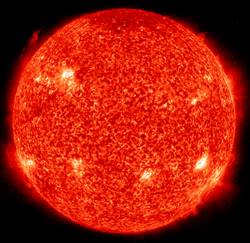 Geomagnetic indicators were quiet, with average daily planetary A index values declining from 9.1 to 7.3, and average middle latitude A index from 8.4 to 6.3.
Geomagnetic indicators were quiet, with average daily planetary A index values declining from 9.1 to 7.3, and average middle latitude A index from 8.4 to 6.3.







